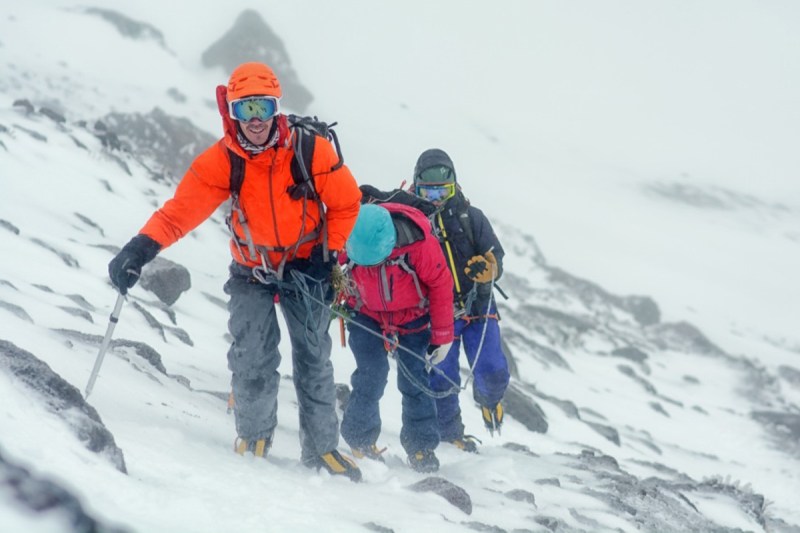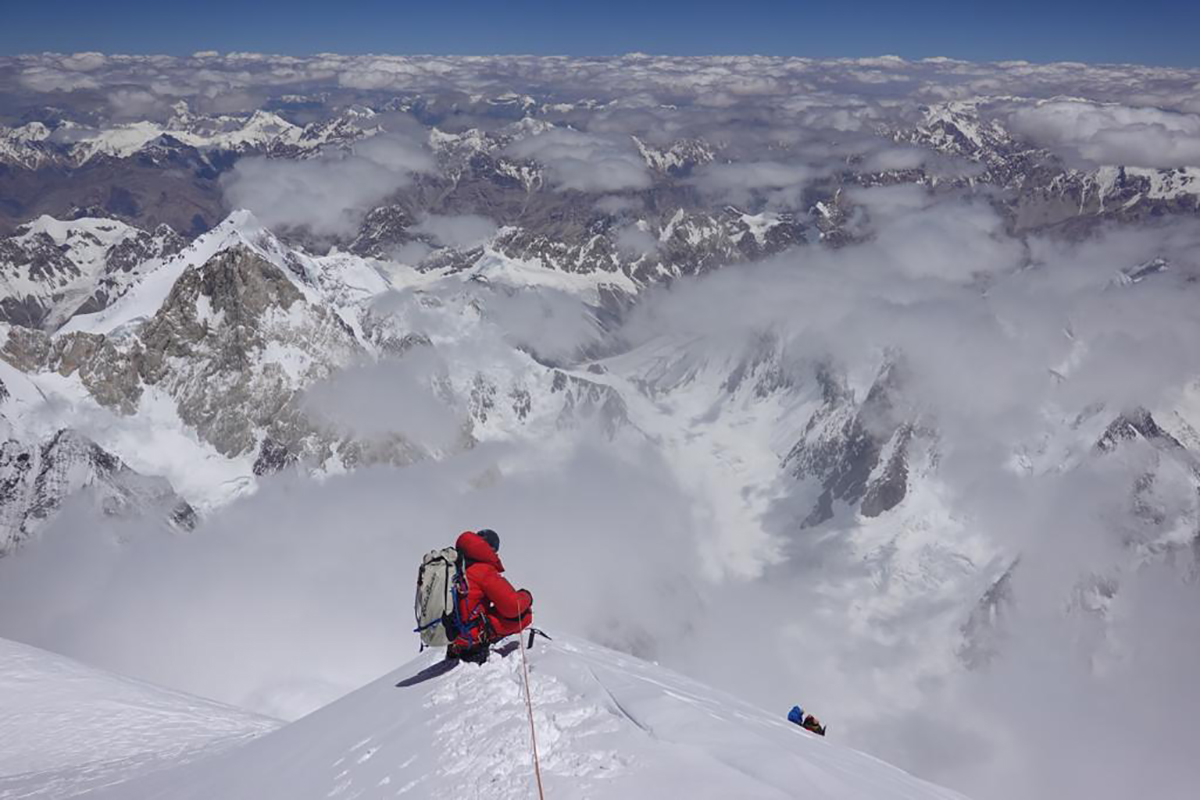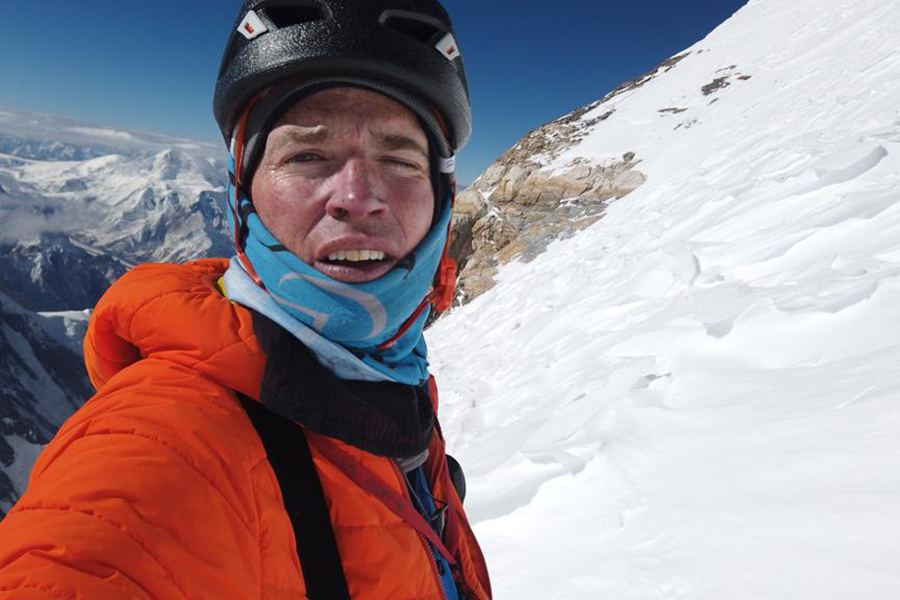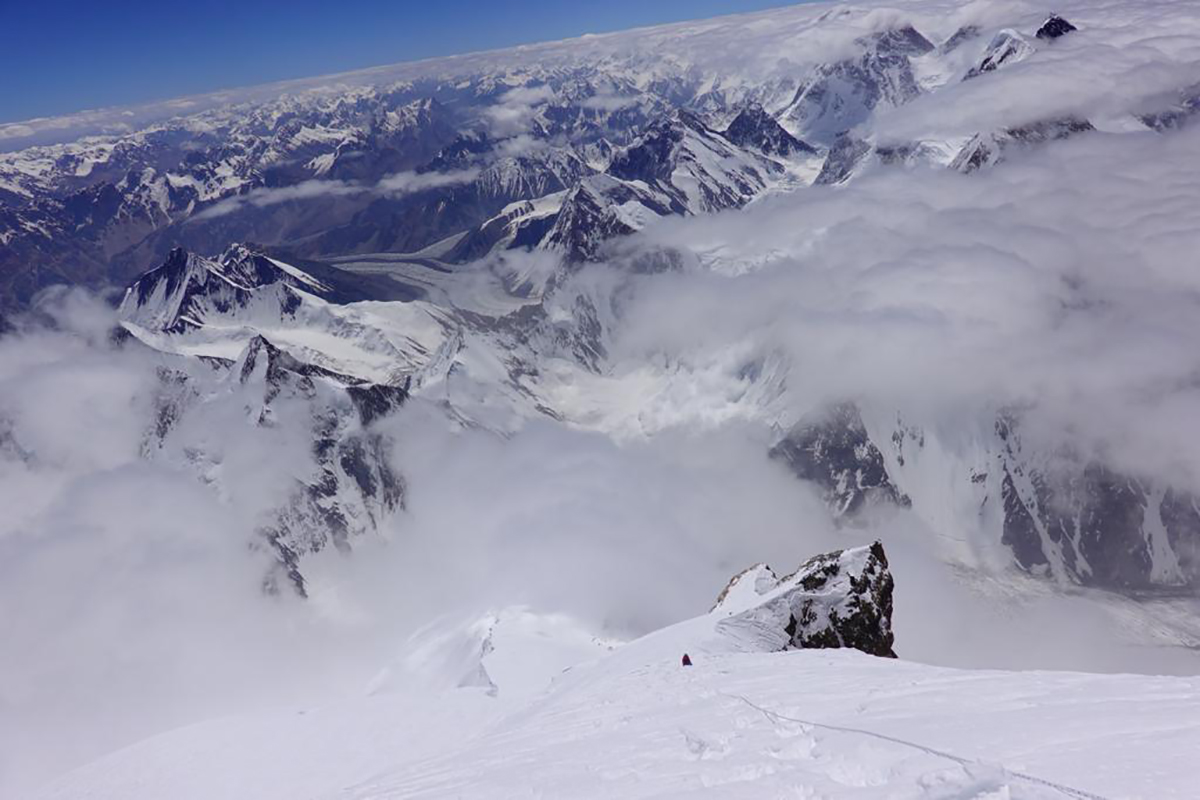Precisely 8,306 people have summited Mount Everest to date. Only 367 have successfully climbed K2, the second tallest mountain in the world. Its extremely steep routes, rock fall, and avalanche danger gives it the nickname”The Savage Mountain. K2 has killed 86 people, nearly 25% of those who have attempted the climb.
Eddie Bauer Mountaineer and CEO of Alpenglow Expeditions Adrian Ballinger summited K2 on July 24, 2019. And he did it without using oxygen.

The Savage Mountain
K2 is 28,251 feet tall and there’s not a lot of oxygen up there — that’s about the height that a 747 plane flies. Most climbers use oxygen bottles starting around 23,000 feet, which makes breathing considerably easier.
Imagine walking across a parking lot. Now think about doing it in two to three hours because it’s so hard to move your body even one step you’re breathing so hard. Now make that parking lot a steep mountain of ice and rock. Below you are sheer cliffs that drop thousands of feet, above you are massive ice seracs (cliffs of ice) dropping car-sized chunks of ice at any moment. That’s climbing without oxygen.
One of the reasons K2 is so dangerous is because of The Bottleneck. The route forces climbers up a snowy section that sits directly beneath a serac. Boulder- and car-sized chunks of ice fall off the serac regularly, starting avalanches or taking climbers out directly. The Bottleneck usually takes a couple hours to traverse but when not using oxygen, like Adrian, it can take much longer. We asked Adrian how long he took and what he was thinking about during those long hours. “Six hours,” he responded, and “whether the random risk was worth it. Mortality. Lost friends.”
Patience and persistence is key to climbing K2. “It’s been an incredibly challenging season here on K2, with 95% of climbers going home due to high avalanche danger, but a K2 summit has been a dream expedition of mine since my teenage years,” Ballinger said. “I’ve been ‘saving’ it until I could do it proudly, without oxygen. And I couldn’t be happier to say I’ve climbed the two tallest mountains in the world with No-O’s.”
Alpenglow Expeditions
Part of Adrian’s success in the mountains has been a technique his guiding company, Alpenglow Expeditions, uses with clients. Alpenglow runs climbing journeys all around the world, including the Himalayas where Everest is located. Part of climbing a big mountain is acclimatization or getting your body used to high altitude and low oxygen. “All Alpenglow high altitude expeditions utilize pre-acclimatization and have since 2012. We are the pioneer of Rapid Ascent climbs,” Ballinger said.
Climbs typically go back and forth up the mountain to higher and higher camps, coming back down a day or two after. This allows their bodies to acclimate and prevent altitude sickness symptoms like lungs filling with fluid or brain swelling. So it’s an important step to climbing mountains, but it takes time. Some climbers can spend weeks and a lot of energy yo-yo-ing up and down the mountain.

Alpenglow Expeditions has started using a Hypoxico tent system to acclimatize at home. For eight hours a day (usually while sleeping), Adrian was in a large plastic tent on his bed or just a small one around his head. Inside, the machine replaces oxygen with nitrogen which simulates the lack of oxygen at high altitude and forces the body to adapt. When arriving at Everest or K2, Adrian’s body was already acclimatized and didn’t require as much up and down effort on the mountain. Roxanne Vogel, a recent client of his, flew to the Himalayas, climbed Everest, and flew home in 14 days — a trip that usually takes 60 to 70 days.
DangerStikTV
To showcase his travels, Adrian and his girlfriend, professional climber Emily Harrington, started the YouTube channel DangerStikTV. Adrian, aka Stikbug, spends four to six months out of the U.S. guiding and climbing massive mountains. The videos document his adventures through intense training and climbing the hardest mountains in the world.
Flipping back to the U.S. side of the globe, Emily, aka Danger Mouse, is working on a project of her own: be the first women to climb Yosemite’s El Capitan in a single day.
One of the most recent videos shows Emily climbing in Yosemite and Adrian climbing on Everest, all the while keeping their relationship strong.
What’s next for Adrian? After months on the most dangerous mountains in the world, switching gears to “six months focused on rock climbing with Emily, first in Yosemite, and then in Spain,” he said.
Does he have any other plans for no-oxygen ascents?
“Yes. I would like to attempt a single-push no oxygen climb of an 8,000-meter peak: BC-Summit-BC.” That’s basecamp-summit-basecamp. All in a day’s work for Adrian Ballinger.





